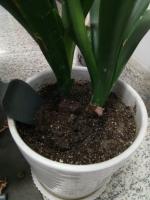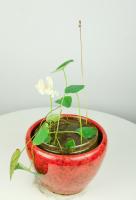What Tissue in the Plant Moves Water
Water transport is a crucial process in plants as it is responsible for the distribution of water and nutrients throughout the plant. There are different tissues responsible for water movement, but the most important ones are xylem and phloem. The xylem tissue is responsible for the transport of water from the roots to the leaves, and the phloem tissue is responsible for the transport of nutrients from the leaves to other parts of the plant.
Xylem Tissue
The xylem tissue is a complex network of vessels and cells that transport water and minerals from the roots to the rest of the plant. It is composed of two types of cells: tracheids and vessel elements. The tracheids are long and thin cells with tapered ends, and their walls are strengthened with lignin, which makes them rigid and strong. The vessel elements are shorter and wider than tracheids, and they have perforations in their walls, which allow water to move through them easily.
The movement of water in the xylem tissue is based on a process called transpiration. This is the process by which water evaporates from the leaves and draws more water up from the roots. As water is drawn up from the roots into the xylem tissue, it creates a negative pressure, which pulls water up through the stem and into the leaves. This negative pressure is caused by the cohesive and adhesive properties of water, which allow it to form a continuous column in the xylem tissue.
Phloem Tissue
The phloem tissue is responsible for the transport of nutrients, such as sugars and amino acids, from the leaves to other parts of the plant. Unlike the xylem, the phloem is composed of cells called sieve-tube members, which are arranged end-to-end to form long tubes. These cells are specialized to transport nutrients across the plant, but they lack a nucleus, ribosomes, and other organelles commonly found in other cells. The companion cells, which are located adjacent to the sieve-tube members, provide metabolic support to the phloem cells.
The movement of nutrients in the phloem tissue is based on a process called translocation. This is the process by which nutrients are transported from the source, such as the leaves, to the sink, such as the storage tissues or developing organs. The source tissues produce sugars through photosynthesis and load them into the phloem cells, which then transport them to the sink tissues, where they are stored or used for growth.
Conclusion
The xylem and phloem tissues are responsible for the transport of water and nutrients in plants. The xylem tissue transports water and minerals from the roots to the rest of the plant, while the phloem tissue transports nutrients from the leaves to other parts of the plant. Both tissues are complex networks of cells that work together to ensure the proper distribution of water and nutrients throughout the plant, making them essential for plant growth and survival.

 how many times do yo...
how many times do yo... how many planted tre...
how many planted tre... how many pine trees ...
how many pine trees ... how many pecan trees...
how many pecan trees... how many plants comp...
how many plants comp... how many plants can ...
how many plants can ... how many plants and ...
how many plants and ... how many pepper plan...
how many pepper plan...































